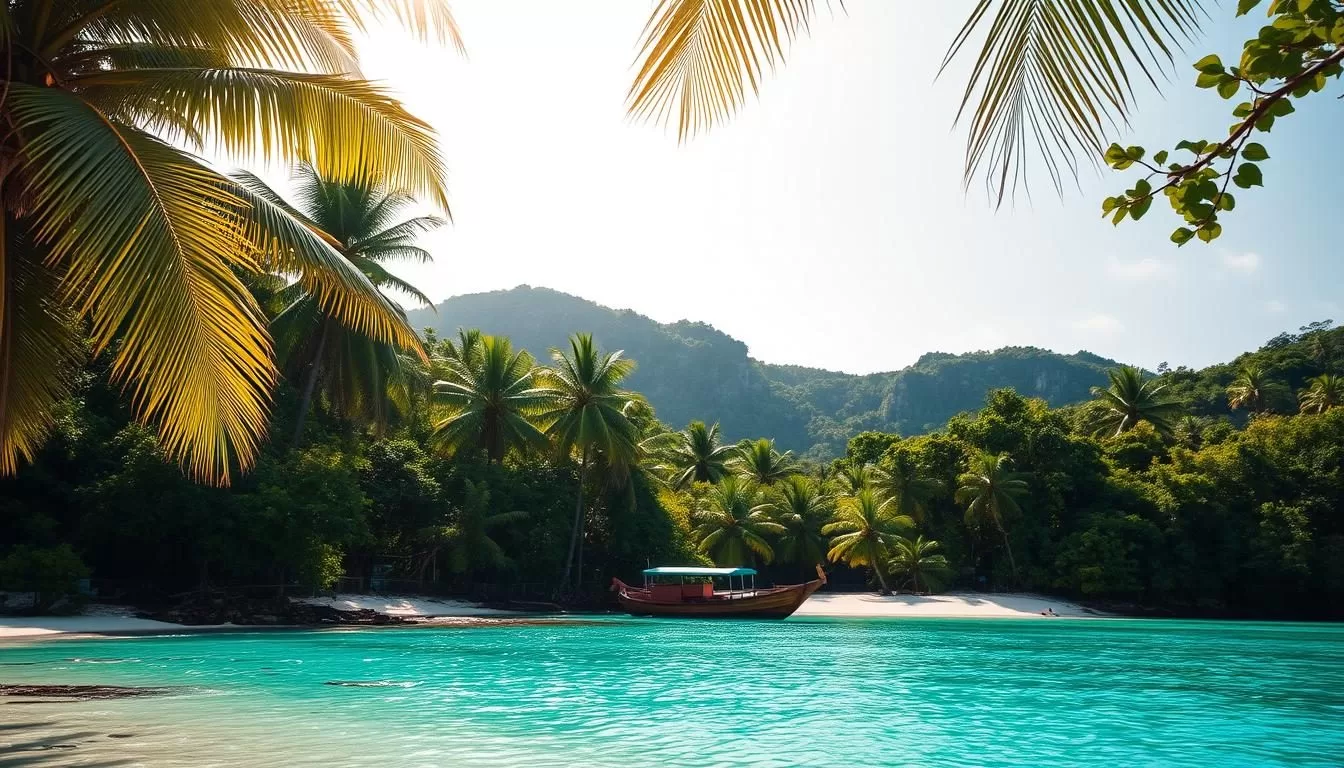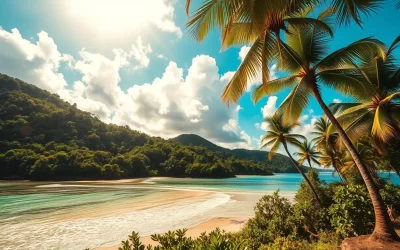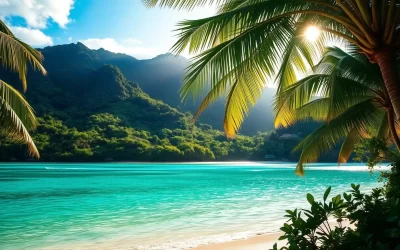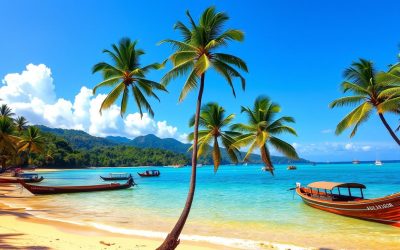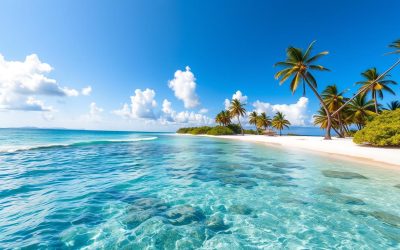Understanding the best time to visit is crucial for a memorable experience. The islands’ weather patterns significantly impact your travel plans, from enjoying perfect beach days to potential activity limitations.
Generally, the temperature ranges between 23°C and 31°C throughout the year, making it a warm escape. However, knowing the optimal time to visit can make a significant difference in your trip.
The peak tourist season is from October to May, with the period from October to March being particularly welcoming for both domestic and international travelers. This is the ideal time to enjoy the islands’ renowned water sports and outdoor activities.
Understanding Andaman’s Climate: A Year-Round Overview
Understanding the climate of Andaman is crucial for planning a trip that maximizes your island experience. The Andaman and Nicobar Islands have a tropical climate, with variations throughout the year that significantly impact your travel plans and activities.
Tropical Paradise: The General Climate Pattern
The islands enjoy a tropical climate, characterized by warm temperatures and high humidity levels throughout the year. The average temperature ranges from 23°C to 30°C, making it an attractive destination for travelers seeking a warm and sunny getaway. The general climate pattern is a significant factor in determining the best time to visit Andaman.
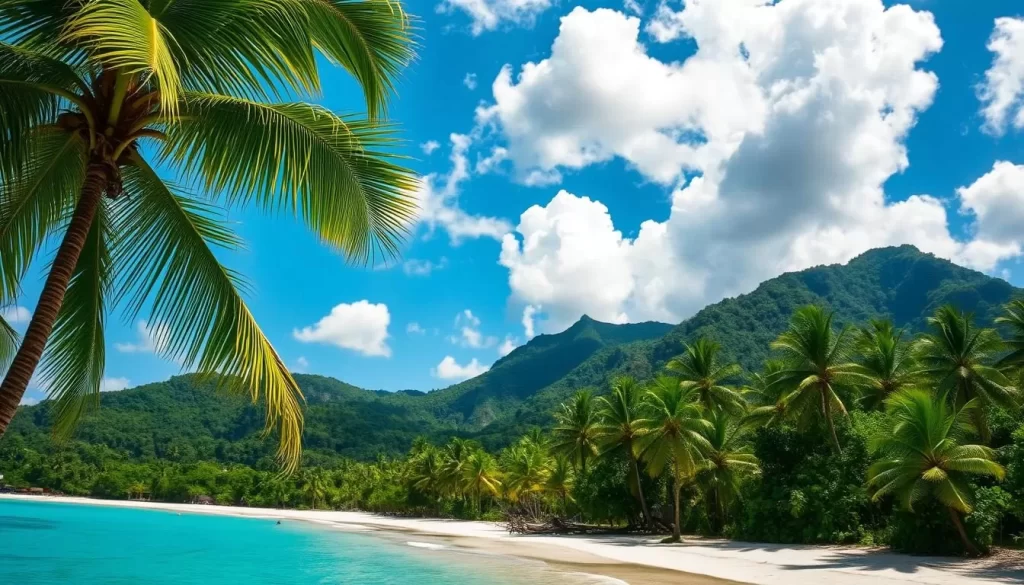
The Two Main Seasons: Peak and Monsoon
The year is broadly divided into two main seasons: the peak season and the monsoon season. The peak season, from October to May, is characterized by pleasant weather and calm seas, ideal for water sports and exploring the islands and beaches. In contrast, the monsoon season, from June to September, brings heavy rainfall and rough seas, potentially disrupting travel plans and outdoor activities.
How Weather Impacts Your Island Experience
The weather in Andaman directly influences the accessibility of certain islands, beaches, and attractions. During adverse weather conditions, some areas may become restricted. Moreover, the clarity and visibility of the water for snorkeling and diving are significantly affected by seasonal changes, with the best underwater experiences available during the dry season. When planning to visit Andaman, it’s essential to consider these factors to make the most of your trip.
Peak Season Paradise: October to May
Peak season in Andaman, spanning from October to May, is a treat for travelers seeking a mix of adventure and relaxation. This period is characterized by favorable weather conditions, making it ideal for exploring the islands’ natural beauty.
Post-Monsoon Bliss: October to December
The post-monsoon season brings a serene ambiance to the islands. The weather is pleasant, with comfortable temperatures, making it an excellent time to visit Andaman. The waters are calm and clear, perfect for scuba diving and other water activities. As the islands have just received rainfall, the flora is lush and vibrant, adding to the scenic beauty.
Winter Perfection: January to February
Winter months in Andaman are marked by cool and dry weather, with average temperatures ranging from 20-25°C. This is considered the peak tourist season, and the islands are bustling with activity. The water is calm and inviting, making it perfect for swimming, snorkeling, and other water sports. It’s an ideal time for enjoying the beaches and exploring the local culture.
Early Summer: March to May
As March arrives, Andaman transforms into a paradise for water enthusiasts. The crystal-clear waters reveal stunning coral reefs, making it a haven for divers. Nature lovers will be thrilled by the island’s distinctive flora and fauna, ready to be discovered. With warm, pleasant weather, it’s the perfect time to enjoy swimming, diving, and exploring the natural beauty of Andaman. Some key highlights of this period include:
- Gradually rising temperatures, reaching 30-33°C by late April, creating perfect conditions for extended beach time and activities.
- Excellent underwater visibility and calm seas, particularly beneficial for scuba diving certification courses and advanced diving experiences.
- Fewer tourists than winter months, resulting in more availability and sometimes better rates at popular resorts and dive centers.
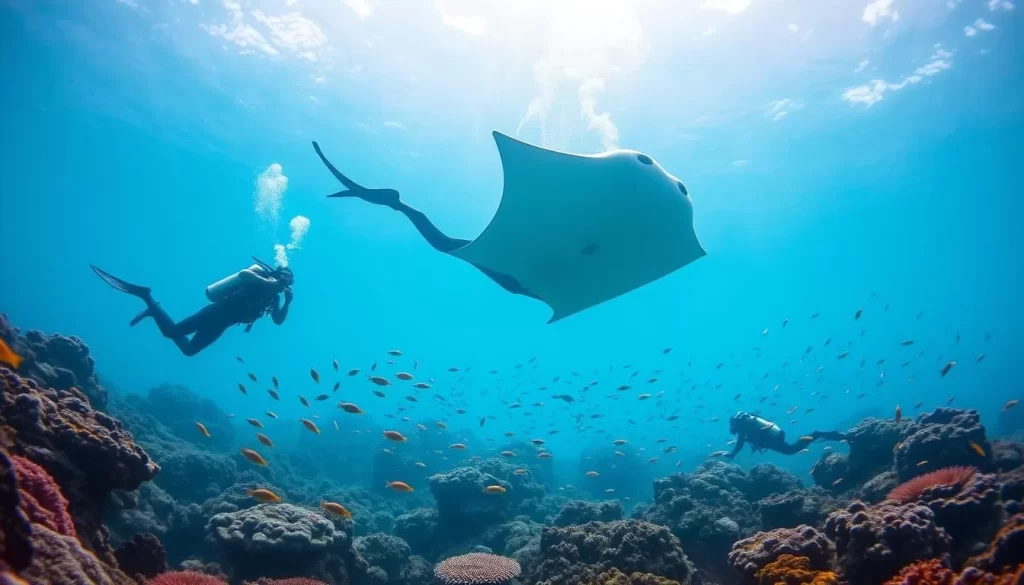
By late May, you might experience occasional pre-monsoon showers, which can provide welcome relief from the increasing heat without significantly disrupting activities. Overall, the period from October to May offers a fantastic opportunity to explore the Andaman Islands, with something unique to offer in each season.
Monsoon Magic: June to September
The monsoon season, which begins in June, brings a unique charm to the Andaman Islands. While it may not be the peak tourist season, this period offers a distinct experience for travelers who don’t mind the rain.
What to Expect During Rainy Season
During the monsoon season, the Andaman Islands experience frequent heavy rains, which can impact water sports and beach activities. However, this doesn’t mean that your trip will be dull. You can still enjoy the warm hospitality of local resorts, savor delicious regional cuisine, and relax with spa treatments. The islands’ lush green landscapes are also rejuvenated during this time, offering a serene and peaceful atmosphere.
Hidden Benefits of Off-Season Travel
Traveling to the Andaman Islands during the off-season has its advantages. You can explore the islands’ cultural heritage without the crowds, visiting attractions like the Cellular Jail and Samudrika Marine Museum. The monsoon season is also an excellent time to indulge in local food tours, cooking classes, and handicraft workshops, providing a more intimate experience of the island’s culture.
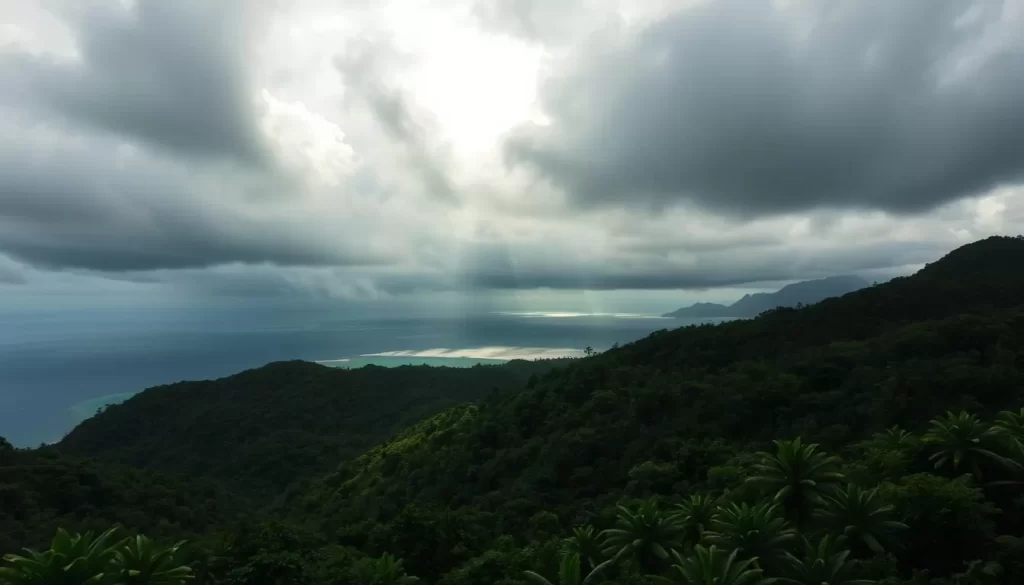
Activities Still Available During Monsoons
Despite the rain, there are still plenty of activities to enjoy in the Andaman Islands. You can visit Port Blair’s indoor attractions, such as the historic Cellular Jail, Anthropological Museum, and Fisheries Museum. Some protected beaches may still be accessible during breaks in the rainfall, allowing for peaceful walks and photography. Additionally, select dive operators offer limited scuba diving excursions during calmer days, particularly in sheltered locations around Port Blair. You can also rejuvenate with spa treatments, yoga retreats, and wellness activities that flourish during this season.
Andaman and Nicobar Islands (UT), India: Best Months for a Weather-Savvy Trip
When planning your trip to the Andaman and Nicobar Islands, timing is everything to ensure a memorable experience. The islands offer a diverse range of activities and experiences that cater to different interests.
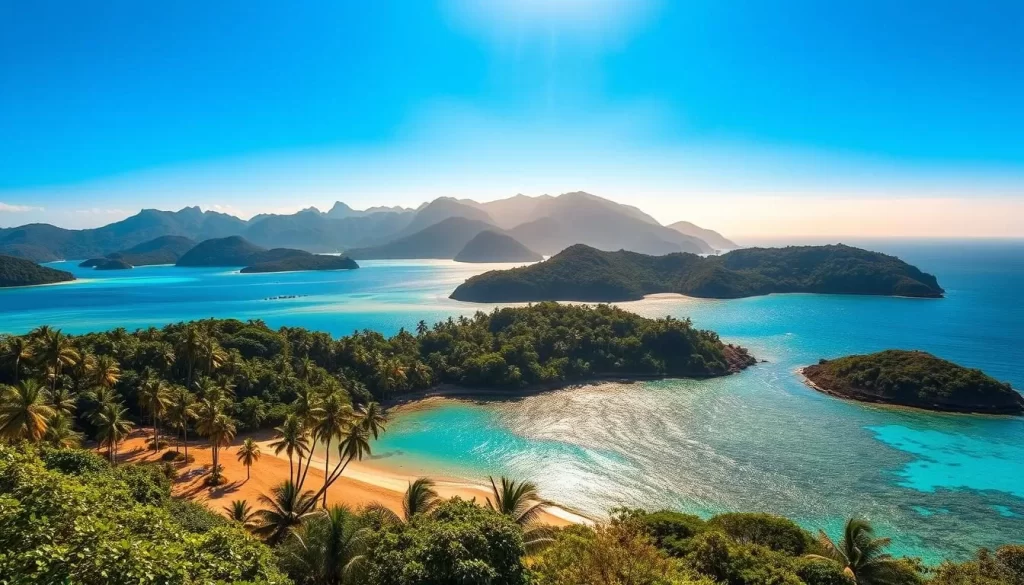
For Beach Lovers and Sunbathers
If you’re looking to soak up the sun on the beautiful beaches, the best time to visit is from January to May. During this period, the weather is pleasant, with clear skies and calm seas, making it ideal for sunbathing and enjoying water activities. The islands’ famous beaches, such as Radhanagar Beach on Havelock Island, are perfect for relaxation.
For Water Sports and Adventure Enthusiasts
For those who enjoy water sports and adventure, the period from October to May is the best. The calm and clear waters during this time make it perfect for snorkeling, scuba diving, and other water activities. You can explore the vibrant coral reefs and marine life in the Mahatma Gandhi Marine National Park.
For Nature and Wildlife Exploration
Nature enthusiasts and birdwatchers will find the period between February to May ideal for exploring the islands’ rich biodiversity. The Andaman Islands are home to over 350 species of birds, including migratory and endemic birds. Places like Mount Harriet National Park, Sippighat Wetland, and Chidiyatapu are must-visit locations for birdwatching.
To make the most of your visit, consider the specific activities and experiences you want to have. Whether it’s relaxing on the beach, enjoying water sports, or exploring nature, the Andaman and Nicobar Islands have something to offer for everyone.
Month-by-Month Guide to Andaman Weather
To make the most of your visit to Andaman and Nicobar Islands, knowing the monthly weather patterns is essential. The islands offer a diverse experience throughout the year, and understanding these patterns can help you plan a more enjoyable trip.
October to December: Festival Season and Perfect Weather
The period from October to December is characterized by pleasant weather, making it an ideal time to visit the Andaman and Nicobar Islands. The temperatures are comfortable, ranging from 25 to 28°C, and the sea is calm, perfect for water activities like scuba diving and snorkeling. The festival season adds to the charm, with various cultural events taking place during this time. You can enjoy the Andaman and Nicobar Islands’ vibrant culture while experiencing the beautiful beaches and clear waters.
January to March: Peak Tourist Season
January to March is considered the peak tourist season in Andaman and Nicobar Islands. The weather is dry and cool, with temperatures ranging from 23 to 28°C, making it ideal for outdoor activities. The water conditions are perfect for diving and other water sports. It’s a great time to explore the islands, enjoy the beaches, and participate in various adventure activities. However, it’s also the busiest time, so you can expect larger crowds.
April to May: Pre-Monsoon Period
As April begins, the Andaman Islands transform into a paradise for bird watchers and researchers. The clear skies and tranquil waters create an ideal setting for spotting various bird species. The temperature climbs to 30-33°C, with increasing humidity, yet the conditions remain excellent for water activities. May marks the transition toward the monsoon season, with occasional pre-monsoon showers and slightly rougher seas. Despite the humidity and occasional rain, the islands continue to enchant visitors. The warm water temperature makes it comfortable for extended snorkeling sessions and diving without thick wetsuits. This period also offers the advantage of lower tourist numbers, resulting in better availability and sometimes reduced rates at popular accommodations.
Island-Specific Weather Considerations
To make the most of your trip to the Andaman and Nicobar Islands, it’s essential to consider the island-specific weather conditions. Different islands have unique weather patterns that can significantly impact your travel experience.
Port Blair: The Gateway Island
Port Blair, being the capital and a major entry point, has a tropical climate with temperatures ranging from 20 to 30 degrees Celsius during the peak season. The best time to visit Port Blair is from October to May.
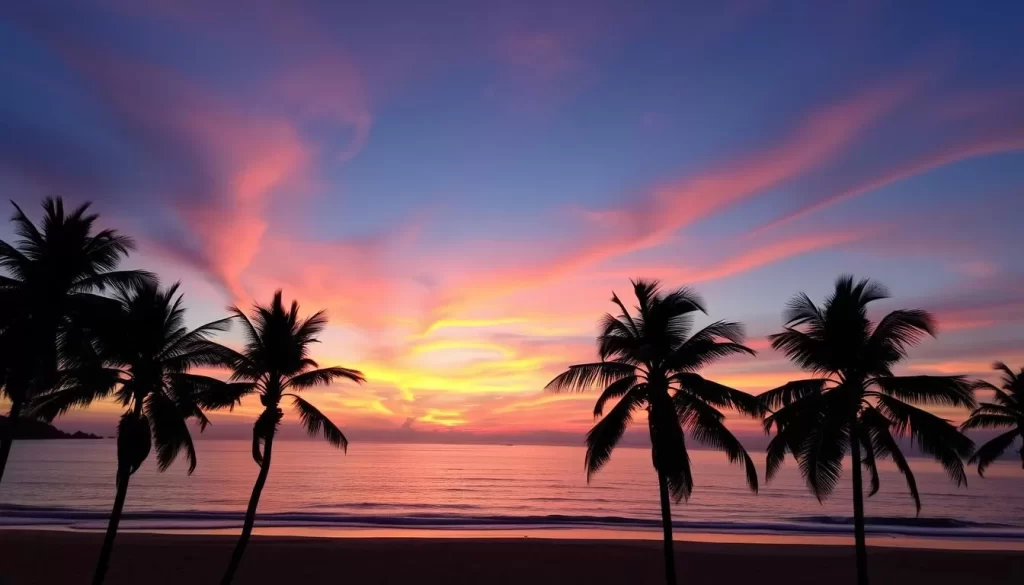
Havelock Island (Swaraj Dweep): Beach Paradise
Havelock Island, known for its pristine beaches, is best visited between October and May. The weather during this period is ideal for water sports and enjoying the island’s natural beauty.
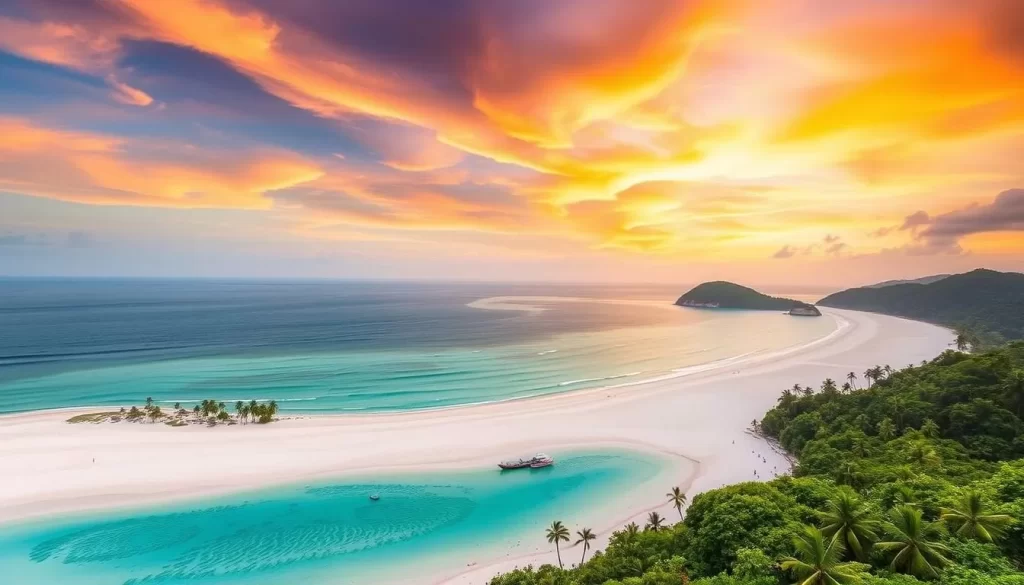
Neil Island (Shaheed Dweep) and Other Islands
Neil Island is a hidden gem with pristine beaches and natural beauty, perfect for those seeking solitude. The ideal time to visit is between October and May. Other islands like Long Island and Baratang Island follow similar seasonal patterns but may have limited infrastructure during off-peak months.
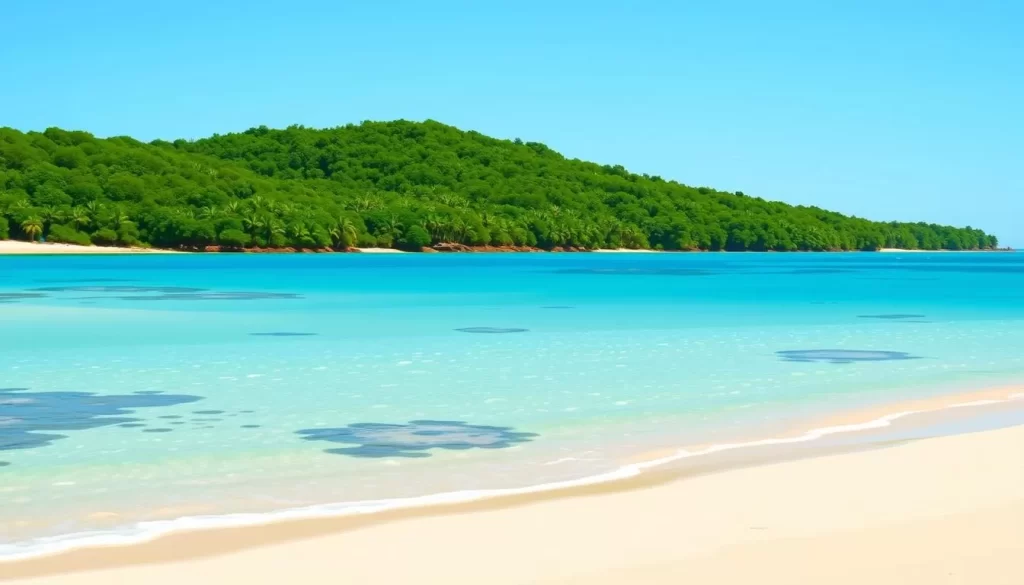
The weather in the Andaman and Nicobar Islands varies significantly across different islands. Understanding these variations can help you plan a more enjoyable trip. For instance, remote islands like Little Andaman and Barren Island are highly weather-dependent, with access often restricted during monsoon months.
Planning Tips for Weather-Savvy Travelers
A weather-savvy approach is key to a successful and enjoyable trip to the Andaman and Nicobar Islands. Understanding the weather patterns and being prepared can significantly enhance your travel experiences.
To make the most of your trip, consider the following planning tips.
Packing Essentials for Different Seasons
Packing the right gear is crucial for a comfortable trip. During the peak season (October to May), you can expect pleasant weather, making it ideal for adventure activities like scuba diving and snorkeling. Don’t forget to pack light, breathable clothing, sunscreen, and a hat. In contrast, the monsoon season (June to September) requires waterproof gear, including raincoats and quick-drying clothes.
| Season | Packing Essentials |
|---|---|
| Peak Season (Oct to May) | Light clothing, sunscreen, hat |
| Monsoon Season (Jun to Sep) | Waterproof gear, raincoats, quick-drying clothes |
Booking Strategies Based on Weather Patterns
Booking your trip and activities according to the weather can save you from unexpected cancellations. The months from October to May are considered safe for water sports due to favorable conditions. You can book scuba diving in Port Blair, Havelock Island, and Neil Island. It’s advisable to contact instructors about the weather before heading out.
Consider booking accommodations that offer flexibility and on-site activities during shoulder seasons.
Flexibility: The Key to Weather Challenges
Being flexible with your itinerary can help you navigate unexpected weather changes. Here are some tips to stay flexible:
- Plan indoor alternatives for each day’s activities in case of bad weather.
- Start your trip in Port Blair and make day-to-day decisions about outer island visits based on current weather reports.
- Develop relationships with local tour operators for real-time updates and alternative suggestions.
- Book accommodations with on-site amenities during shoulder seasons.
- Maintain a positive attitude toward weather challenges, as they can lead to unique experiences.
By being prepared and flexible, you can have a wonderful trip to the Andaman and Nicobar Islands, regardless of the weather.
Conclusion: Making the Most of Your Andaman Trip Whatever the Weather
The Andaman and Nicobar Islands beckon with their pristine beauty throughout the year, but timing your visit right is crucial for an unforgettable experience. Plan your Andaman trip during the optimal months, and you’ll surely create memories that last a lifetime in this tropical paradise.
The islands truly shine from October to March, welcoming travelers eager to bask in their natural beauty. This period is perfect for enjoying the island’s renowned water sports and outdoor activities. However, the Andaman and Nicobar Islands offer unique experiences throughout the year, with each season presenting its own charm and opportunities.
Understanding the archipelago’s weather patterns allows you to align your visit with your preferences, whether you prioritize beach days, underwater visibility, or budget considerations. With flexibility and a positive attitude, you’ll have a rewarding experience regardless of the conditions. Ultimately, the best time to visit Andaman is when you can fully embrace its natural beauty and adventure opportunities with an open mind.
The above is subject to change.
Check back often to TRAVEL.COM for the latest travel tips and deals.
